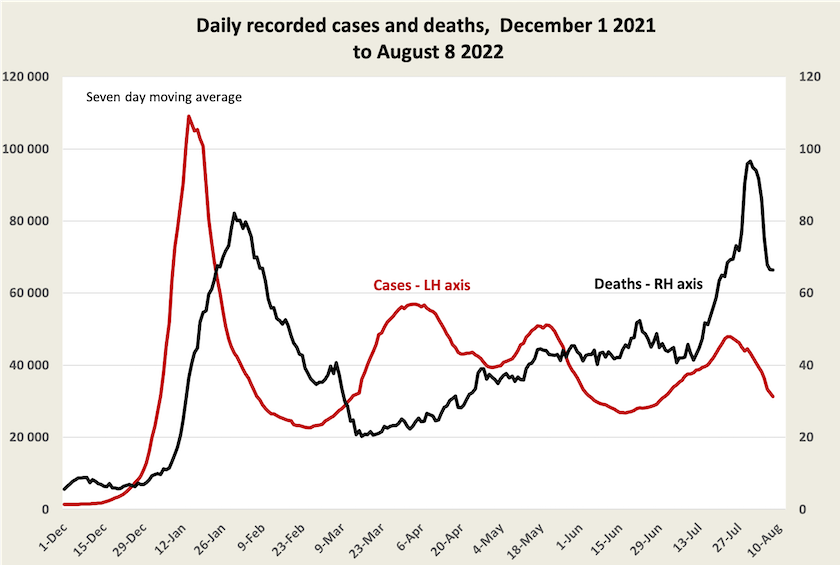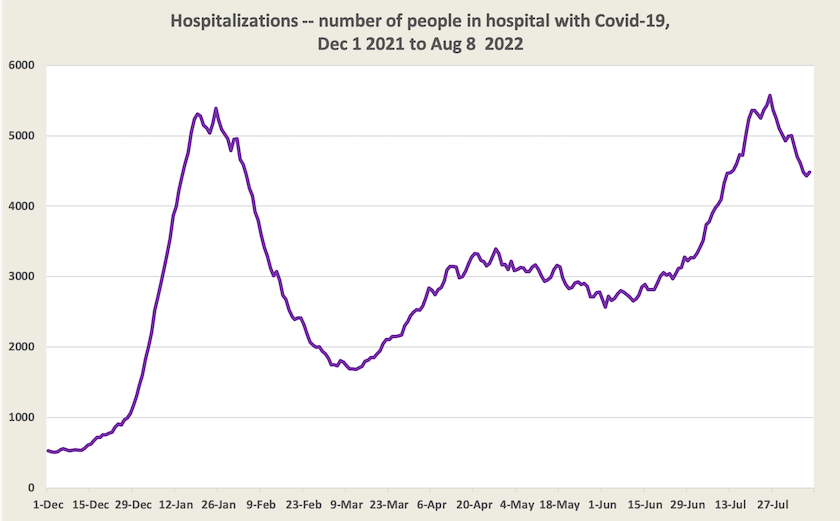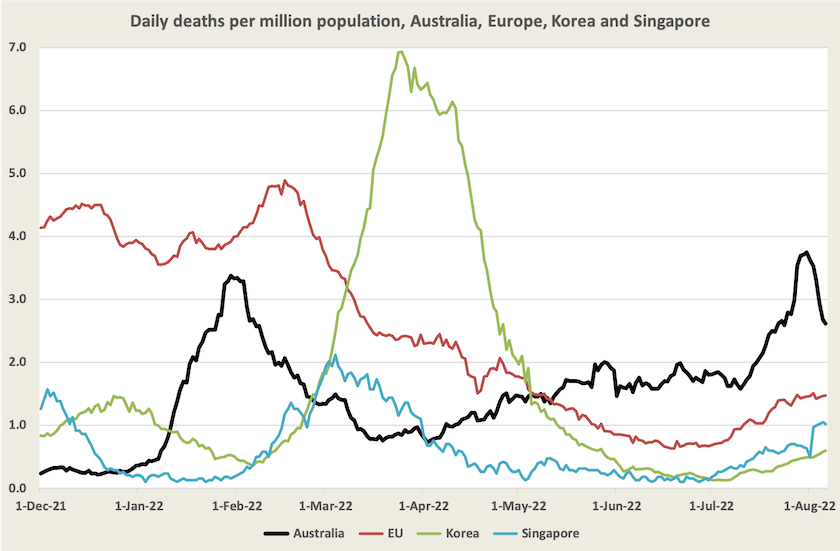The pandemic and other health policy

On the way down – for now at least
Recorded figures confirm that in the latest wave cases and deaths have peaked.

Both series – cases and deaths – need to be interpreted with caution.
Cases are significantly underreported, and as a result of Covid complacency the extent of underreporting is probably increasing. But the graph does pick up the general pattern of waves of infection, corresponding with the arrival of new variants. Cases seem to be on the way down in all states and no new virus variants or sub-variants have appeared (so far) to displace the dominant BA5 strain.
For deaths it’s probably the opposite: deaths don’t get under-reported, but we know that some states have been tardy in reporting deaths, and the steepness of the rise and fall looks suspicious. If we had a proper daily count the curve would probably be less peaky.
Hospitalization
Figures on hospitalizations confirm that a peak has been reached.

Covid hospitalizations are not the only indication of the pandemic’s load on hospitals, however. As emergency physician Stephen Parnis explains on Radio National’s Breakfast program, the pandemic has had other consequences. Some people made poor lifestyle choices during lockdown, with too little exercise and too much alcohol, adding to their disease risk. Some did not get early diagnosis or intervention for conditions that have worsened without treatment. And Covid-19 public health measures had the benefit that many viruses other than Covid-19 were held at bay, but they have now returned. This is all on top of the normal pressures on a hospital system that would be stressed even if Covid-19 had never occurred.
Deaths are still high
Deaths per recorded case are still higher than they were in April-May this year, but this may be due, in part, to fewer cases being officially recorded.
In comparison with other countries, at around 2.6 daily deaths per million population, our death rate is still high. The graph below shows the pattern of Australian Covid-19 deaths in comparison with a selection of other “developed” countries.

Vaccination
Public health authorities are concerned about vaccination levels. While 96 percent of adults (aged 16 or older) have received two doses, only 68 percent have received a third dose.[1]
There is significant variation between states: in Western Australia and the ACT 80 percent or more of eligible adults have received a third dose, while in Queensland only 60 percent have received a third dose. It is also notable that death rates in Western Australia and the ACT are around half the rates of other states. This does not necessarily indicate a direct causal relationship – vaccination levels may be an indicator of general public health awareness, for example.
There was some increase in third-dose vaccination rates in July, but vaccination rates are now down to about 6000 a day. At that rate, with about 6 million adults who have still not had a third dose, it would take almost three years for complete third-dose coverage.
1. As at 6 August. ↩